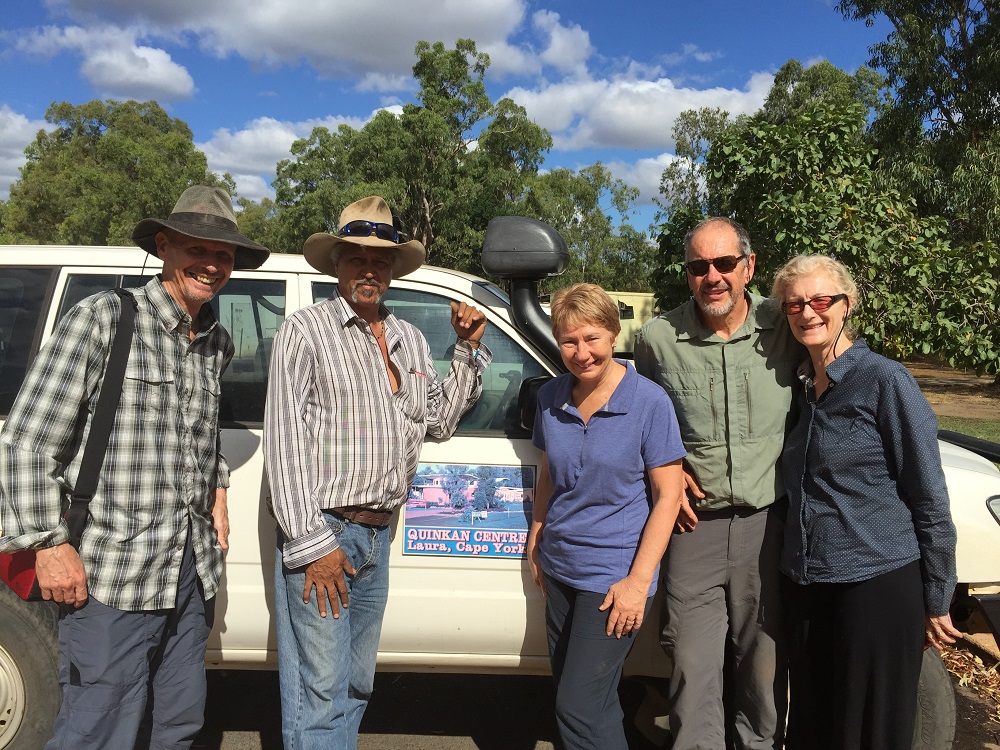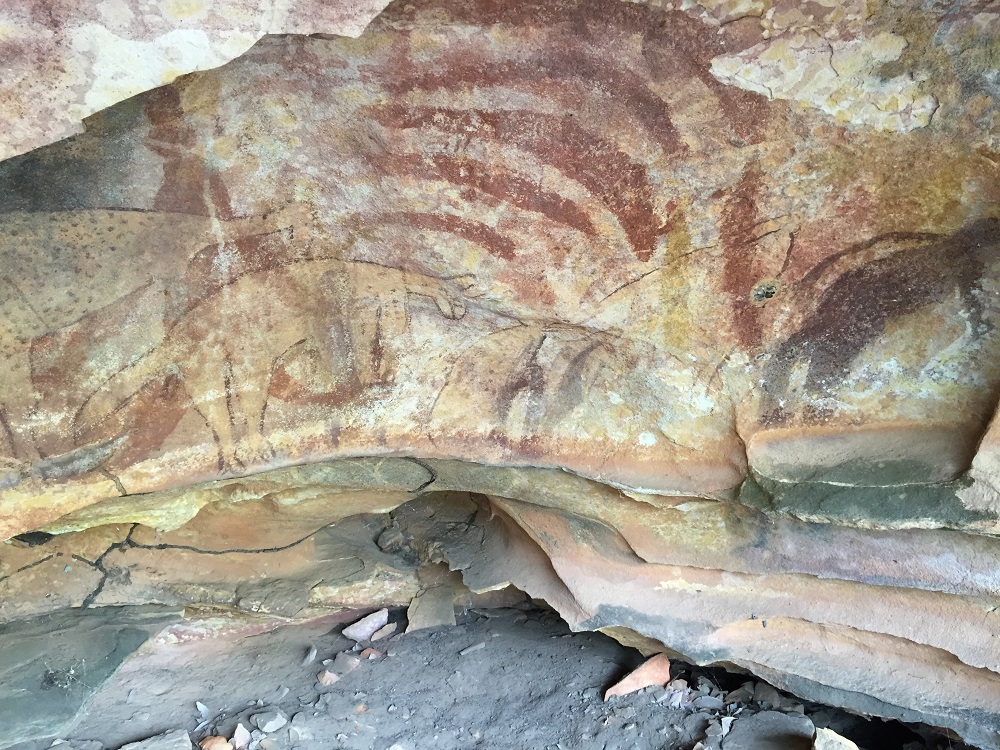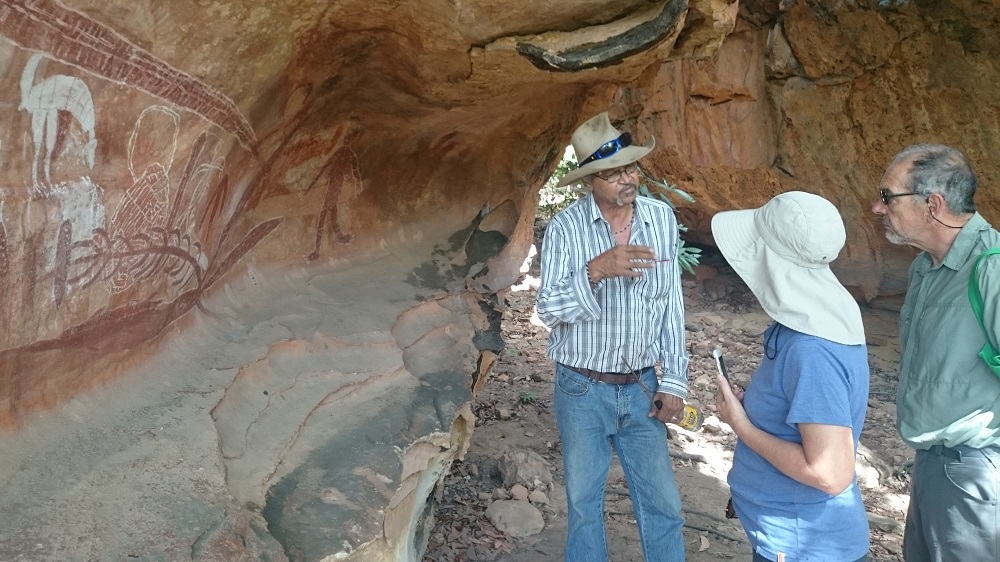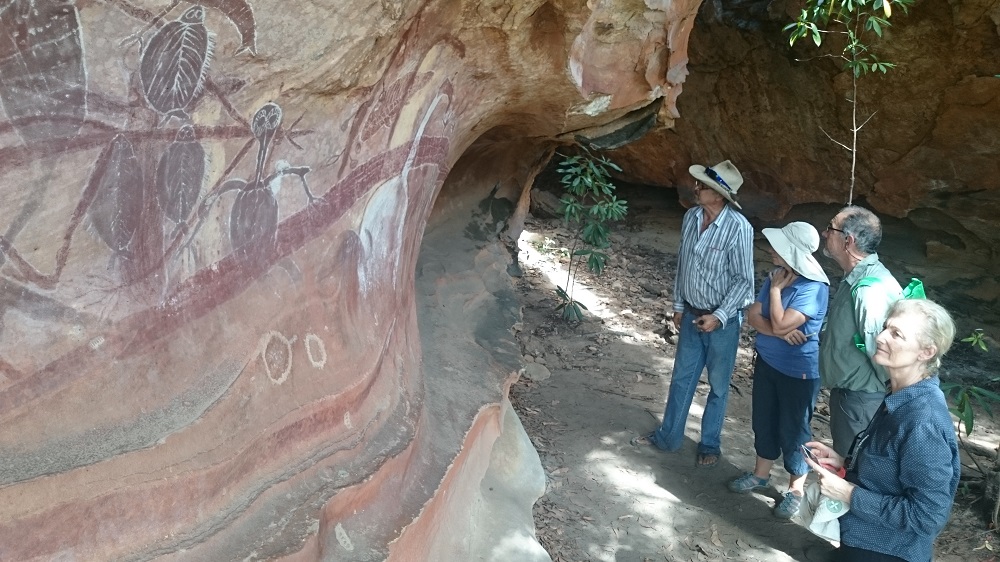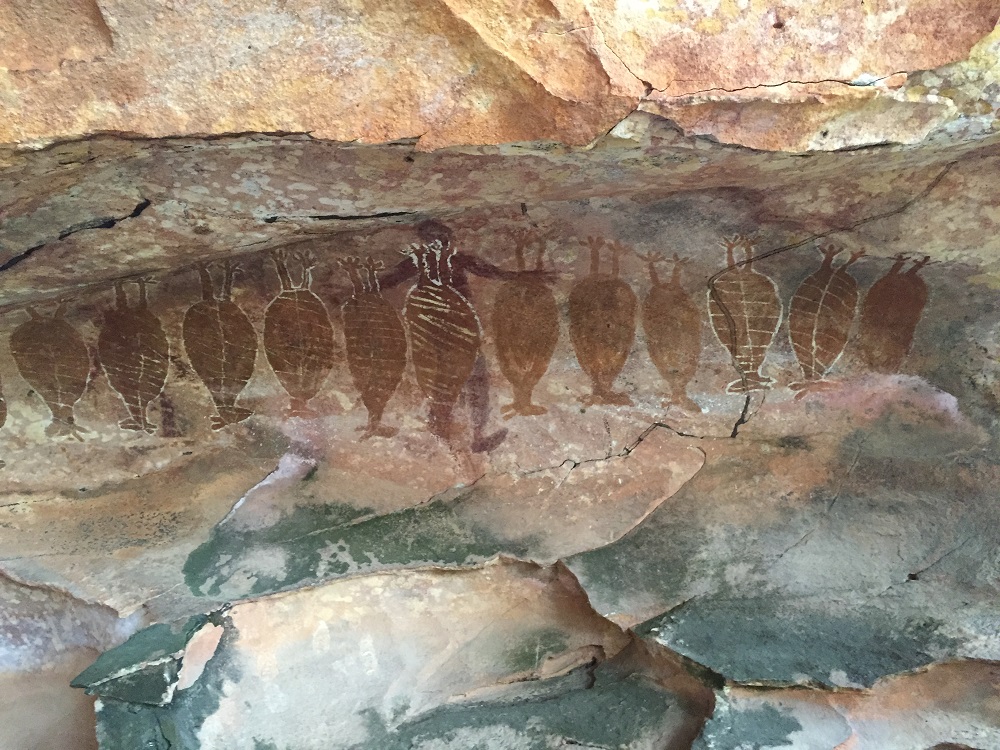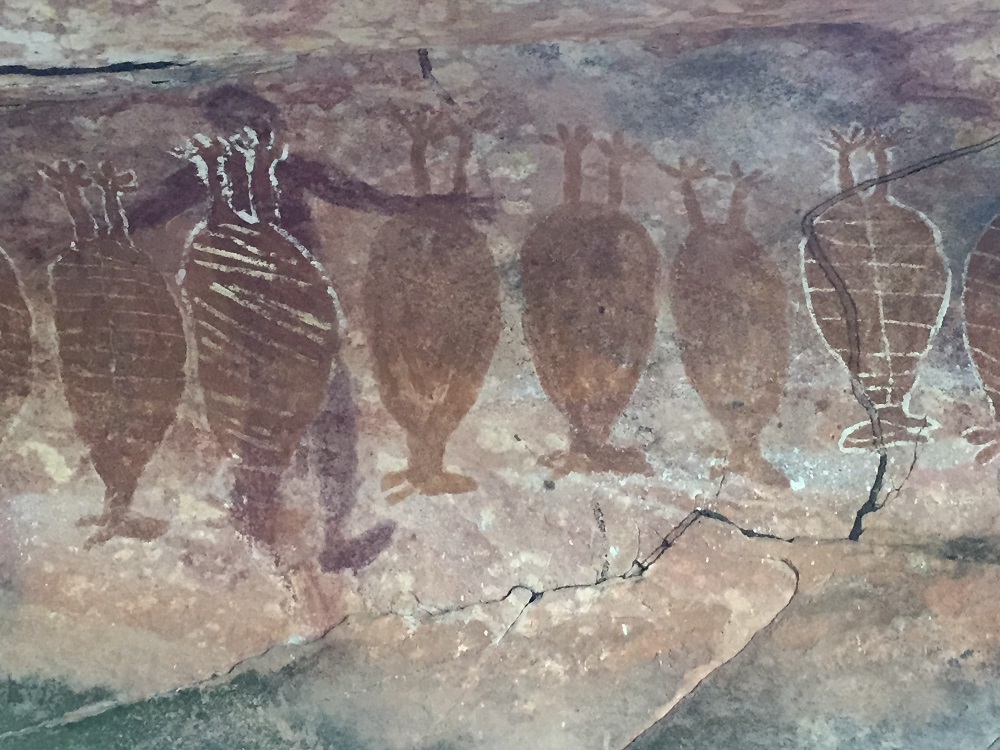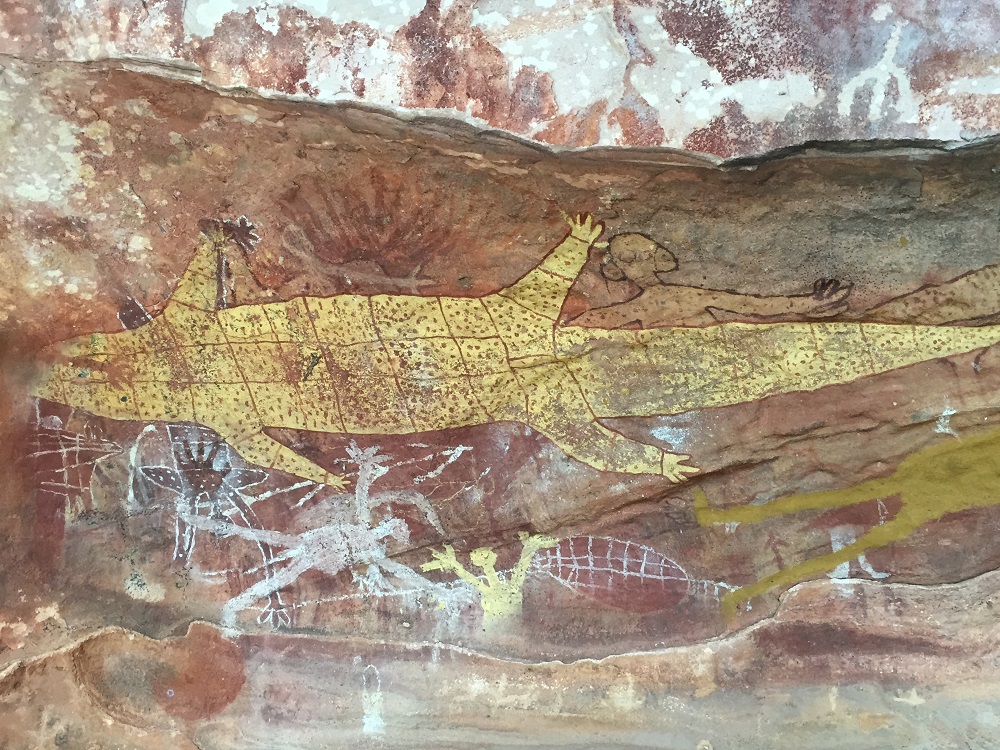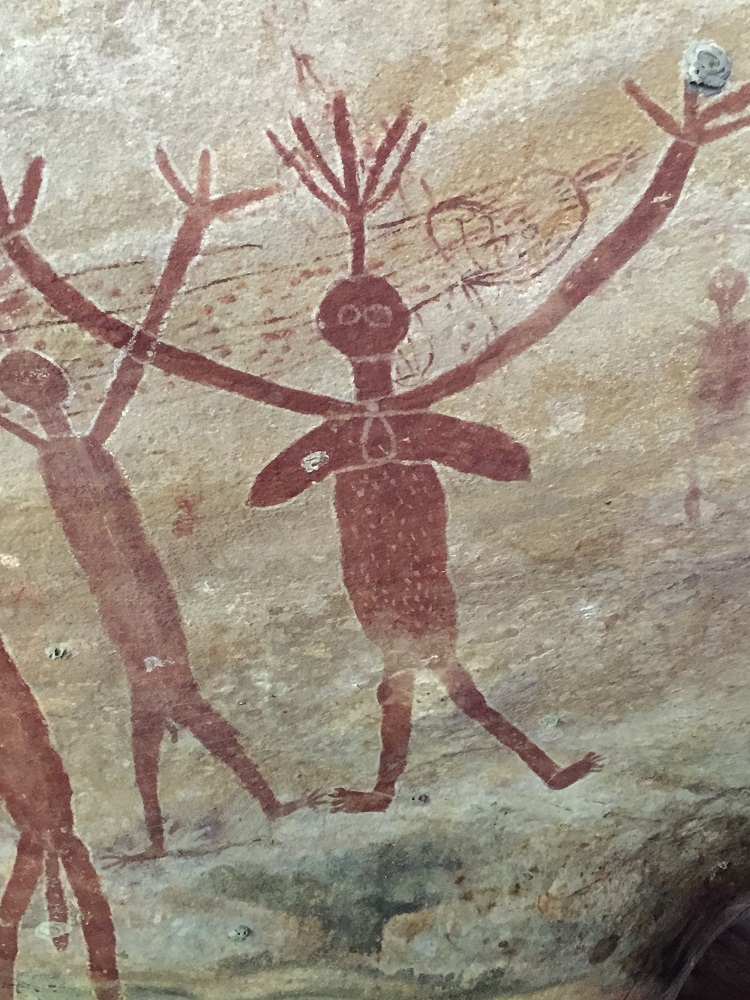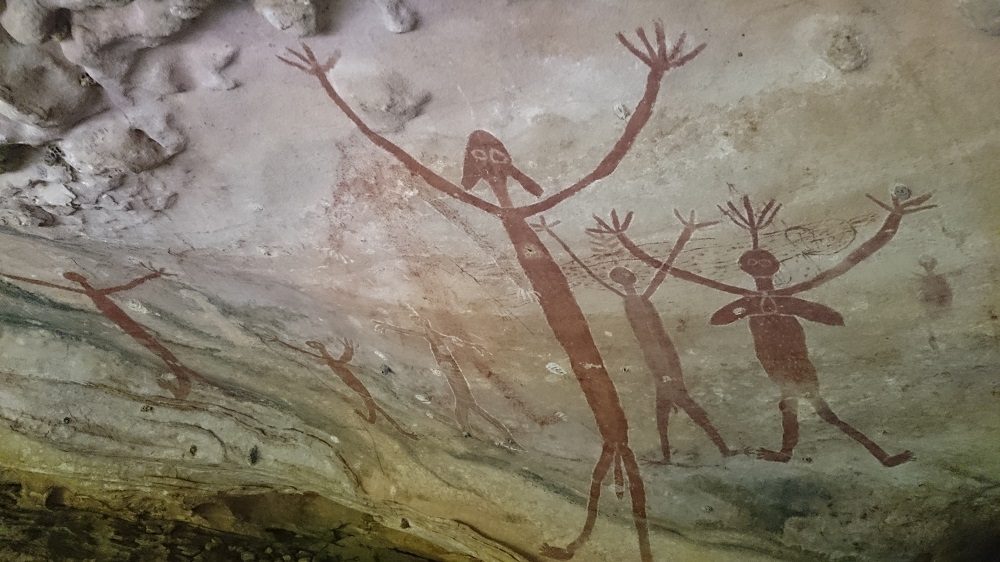These photos are from the tour we did with Johnny, our aboriginal guide. We booked the tour at the Quinkan Cultural Centre.
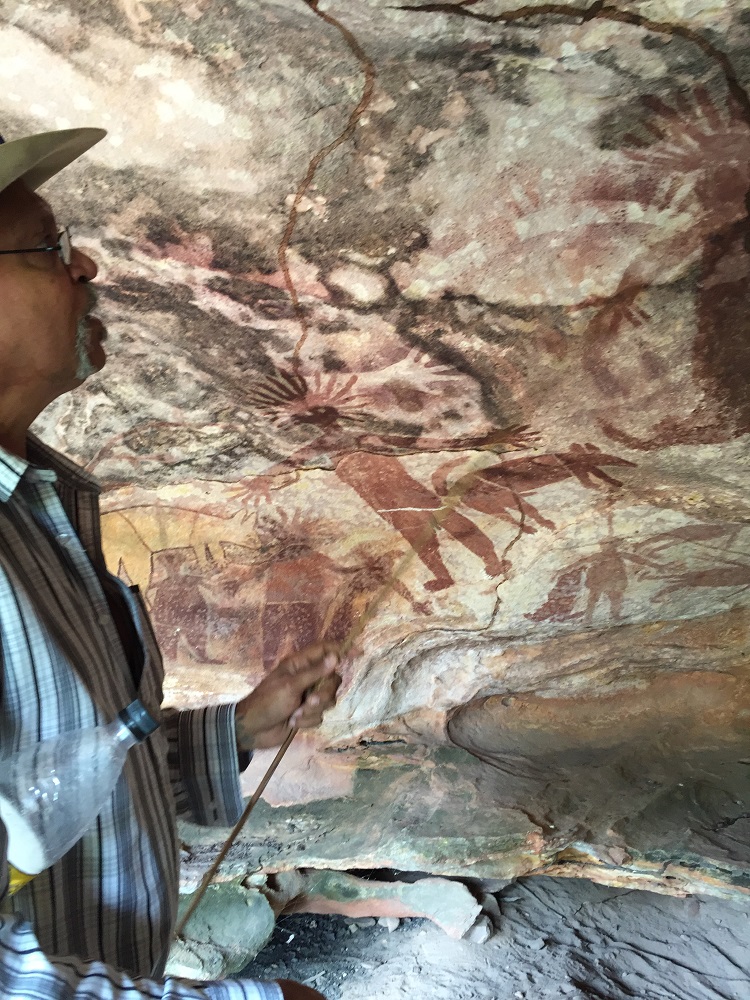
Ancestral beings variously had 4 or 6 fingers and wore headdresses. A dingo appears in this picture.
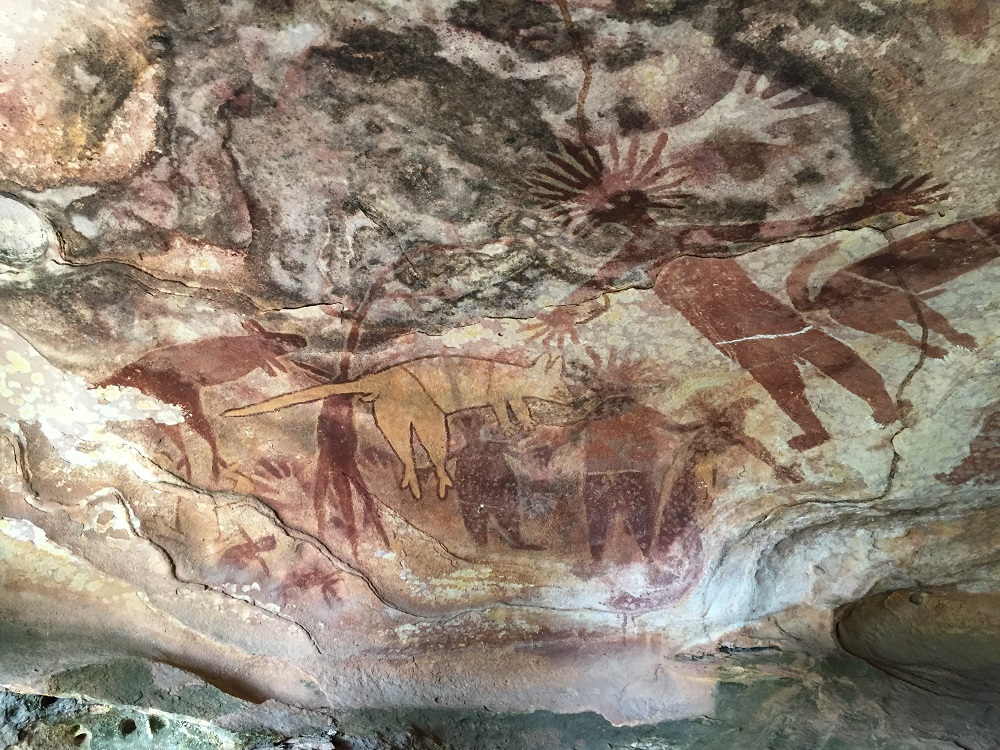
I wish I could remember all we were told about this picture. Look for the kangaroo, dingo, hand prints.
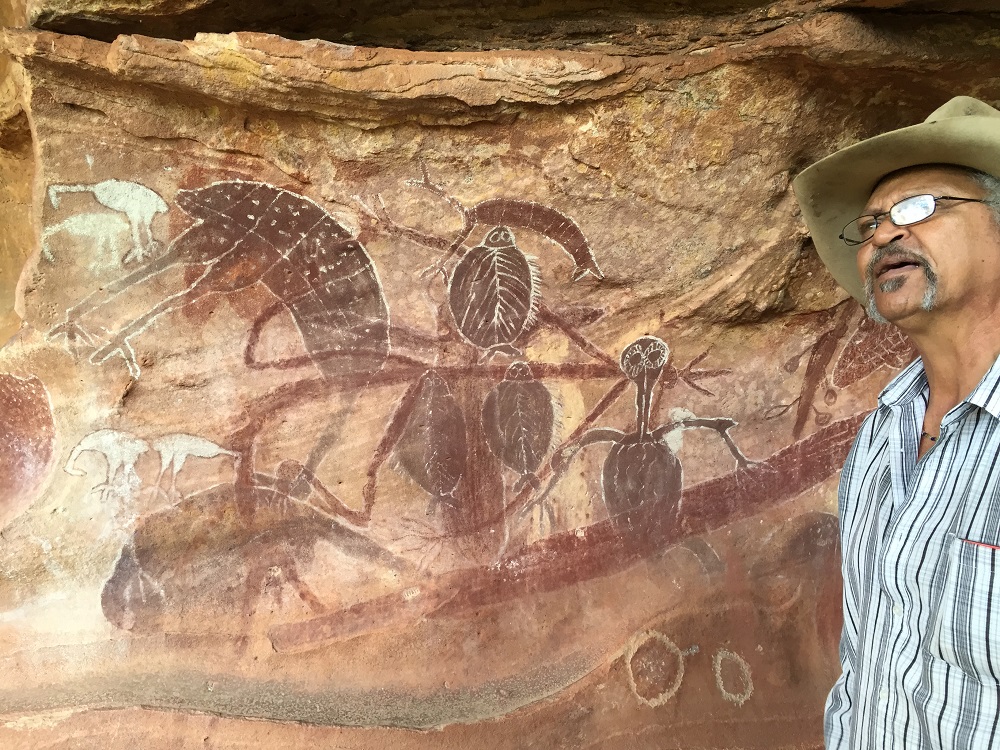
The little guy with the round head, owl-like eyes and leaf-like fingers is a male spirit figure.
The circles just in front of Johnny are engraved (not painted), a practice that has been dated back at least 14,000 years. The fish in the this painting depict the skeletal bones, and the group of emus are particularly interesting in that the white ones were painted much earlier than the darker figures on the wall, including the large emu.
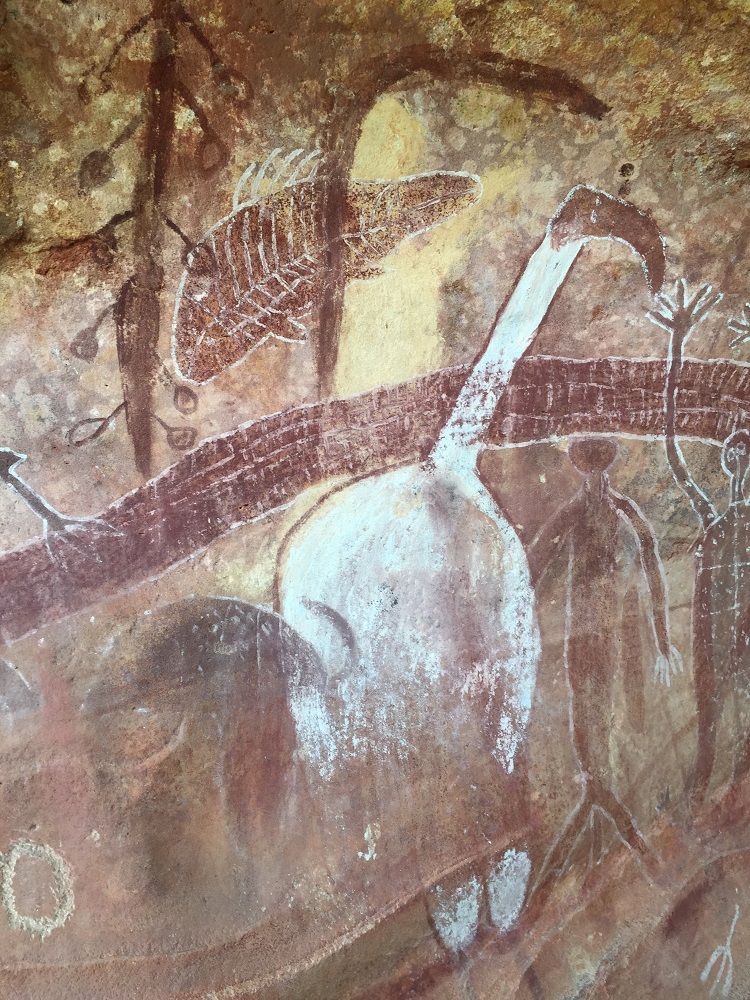
A large white ibis is painted over a snake that extends the length of the gallery. Tree branches hold fruit. and a fish is portrayed, bones and all.
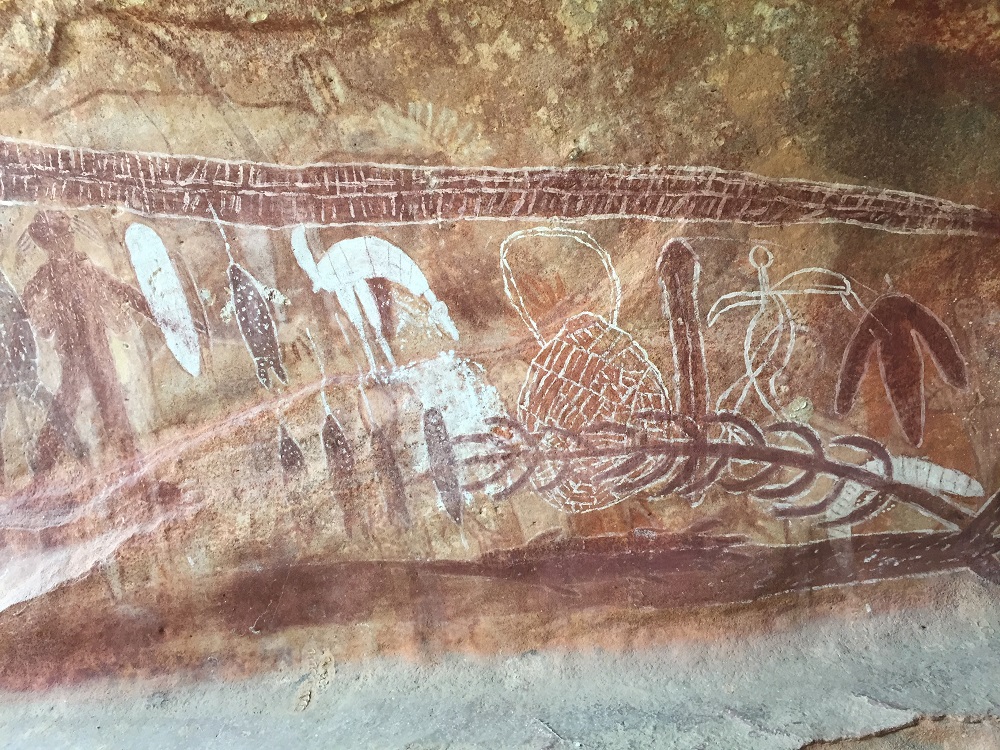
A palm frond covers a dilly bag used for collecting food. At the tip of the palm frond is some rifle fish illustrated with a white line of expelled water coming from the top of their heads which is how they catch their prey. The snake that extends horizontally across the entire top of the photo extends for the entire length of the gallery.
So much to see in every painting.
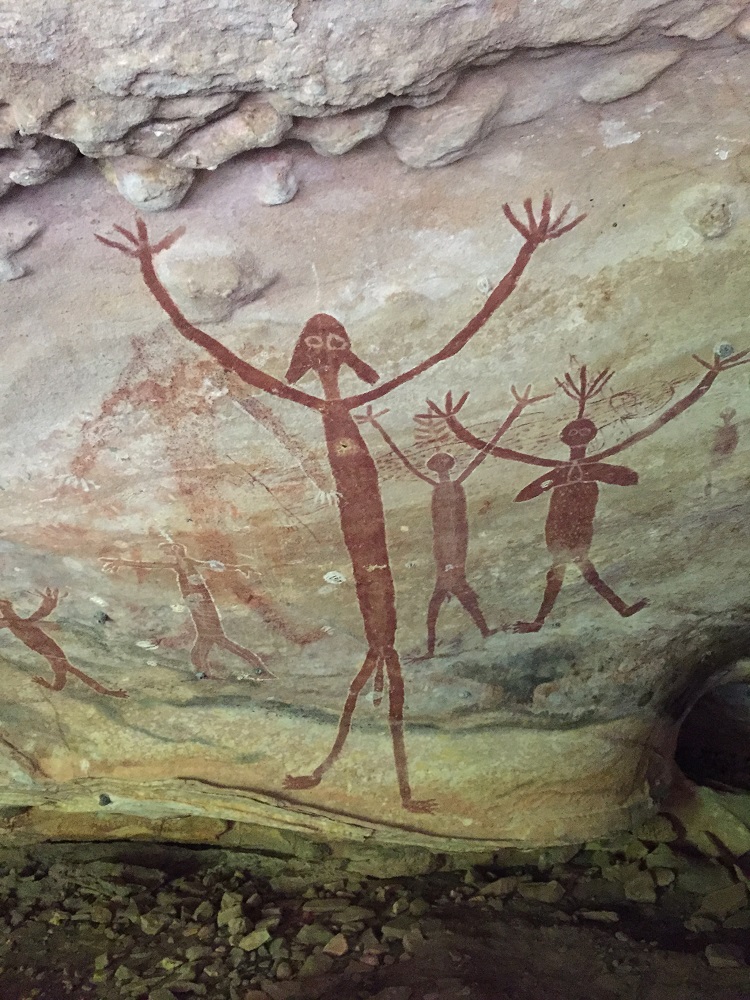
The main figure in this photo is a Timara known as ‘the big boss of everybody, white man too’, as told by an aboriginal elder. The larger figures to the right with the headdresses and their arms raised are cultural heros.
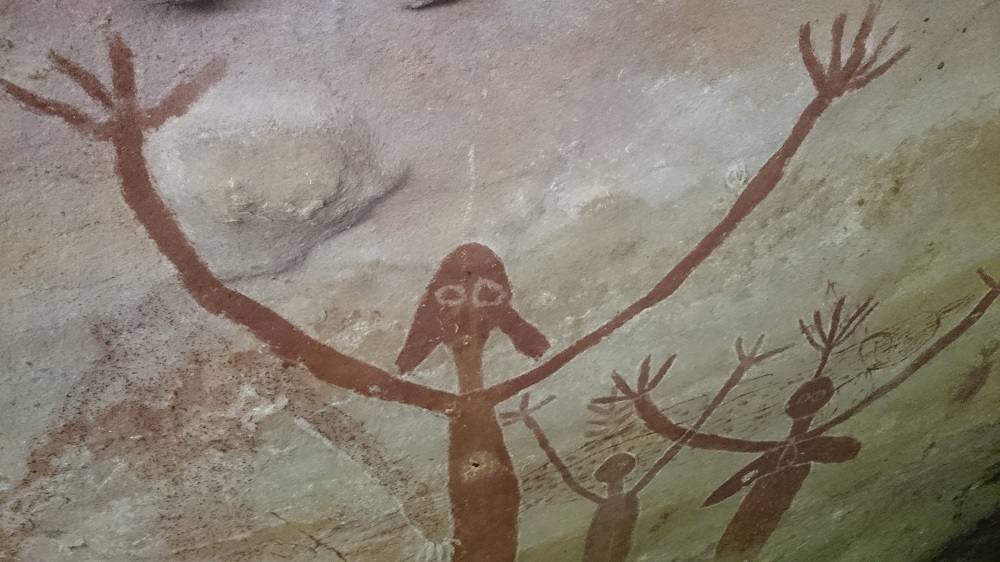
Notice the big ears on the Timara. They could hear everything you said. Fortunately they were the good spirits and this particular one, ‘the big boss’ was responsible for the distribution of food around the countryside.
